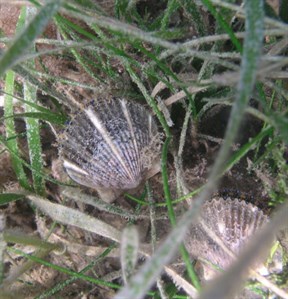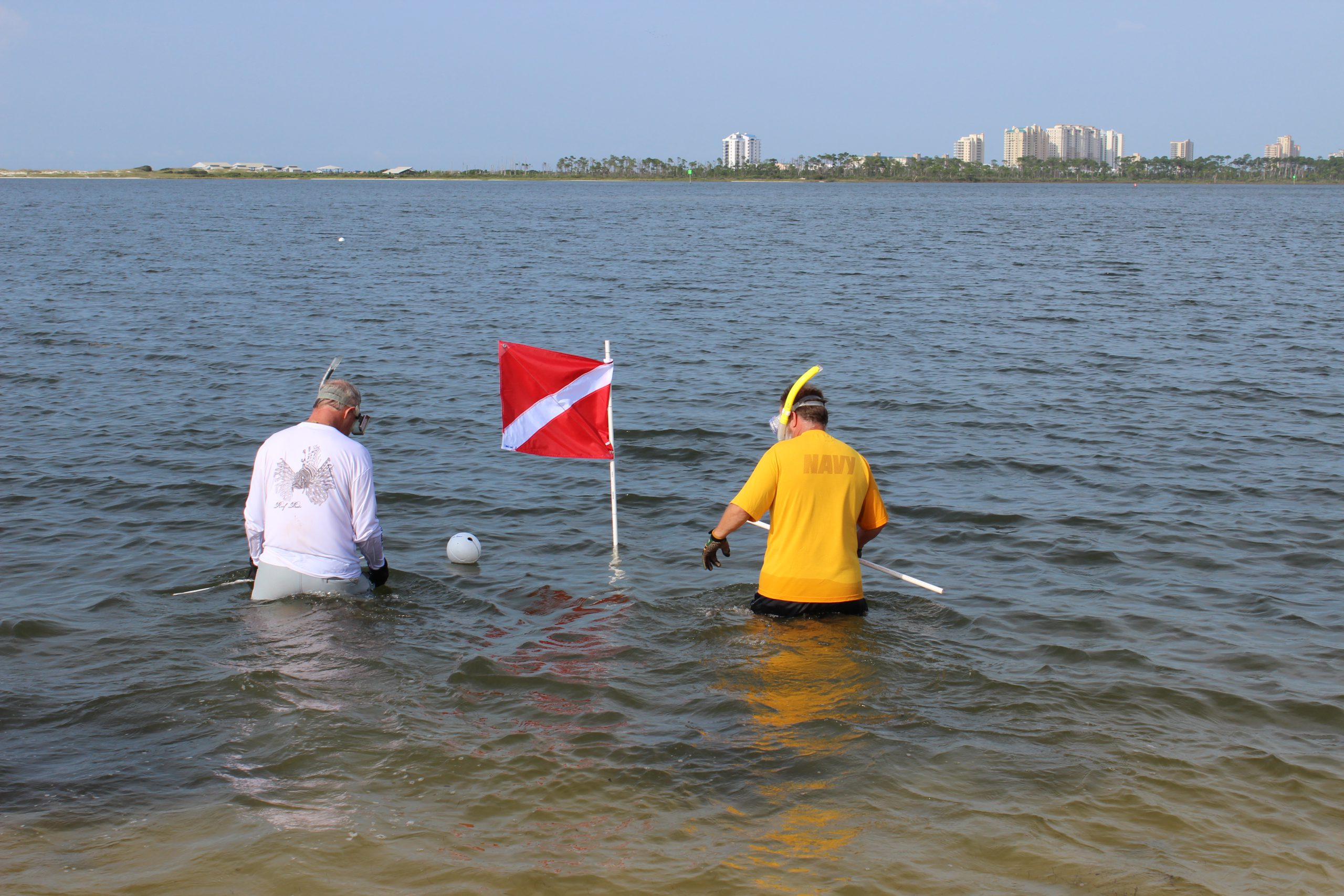We round out National Estuaries Week with an article about yet another marine animal that was once common in lower Pensacola Bay and disappeared. This is one that many local residents would LOVE to see make a return. It is the bay scallop.

Photo: Florida Fish and Wildlife Conservation Commission
Many residents are more than familiar with this bivalve. Family trips to participate in scalloping in St. Joe Bay is very popular and an economic boost for the community over there. But you have to talk to older members of our community to remember a time when you could scallop in Pensacola Bay. There was a time.
All of the locations were in the lower portions of the bay, in Santa Rosa Sound and Big Lagoon. Scallops are closely associated with seagrass beds, particularly turtle grass. Snorkelers could go out a fill a five-gallon bucket in a short period. There was even a commercial harvest for them once. A spoke with a local shrimper who said back in the day when they were allowed to shrimp in the Sound, they would periodically catch bay scallops. They would drop a small dredge to collect them.
Then they all went away.
I am not sure of the year this began but it was very quick. One moment they were there, the next they were not. There has been a lot of speculation as to what happened. Certainly, you could point the finger at the declining quality of the water and habitat within the system. Poor water quality and decline of the much-needed seagrass habitat certainly played a role. You could also point the finger at overharvesting. They did stop commercial harvest and then stopped recreational. Today there is no commercial harvest anywhere in Florida and all of the recreational harvest is in the Big Bend region of the state. But there are a lot of folks, including the state, who like to see them restored in our bay and others where they once existed.
Over the last six years Florida Sea Grant has conducted the Great Scallop Search, it has been going on longer in southwest Florida. During a week in the summer volunteers snorkel assigned transects in Big Lagoon and Santa Rosa Sound conducting scallop counts. Scallops breed externally in a mass spawn event. There needs to be a relatively high number of them in an area for this method to work. The objective of this project is to see how many are there and whether their efforts to mass spawn will restore the populations on their own. Over the last six years in Pensacola Bay, we have found three live scallops. This certainly is not enough to restore on their own. We do find scallop shells and the fact that there have been three suggest they may be somewhere out there.

I had one volunteer tell me in 2019 that he was anchored to watch a 4th of July show from his boat in Santa Rosa Sound. For kicks and giggles, he donned his mask and went exploring before dark and the fireworks were to begin. He found scallops. He did not say how many but reference that there were quite a few of them. Several years ago, we found a pile of shells in the parking lot of a local boat ramp. It appeared to be about 35 scallops. NOTE: IT IS ILLEGAL TO HARVEST BAY SCALLOPS IN ESCAMBIA AND SANTA ROSA COUNTIES. IF YOU REMOVE WHAT FEW WE HAVE, THERE WILL BE NO CHANCE IN GETTING THE NUMBERS UP TO A LEVEL WHERE THEY CAN HELP RESTORE THEMSELVES.
A few years back my wife and I went snorkeling early in the spring in Santa Rosa Sound and found small scallops littering the bottom. We were amazed and excited. We returned a month later to find them all dead. Not sure what happened but something is still not right with the bay to support scallops.
So, is there a comeback with scallops as we seem to be seeing with terrapins and horseshoe crabs. No, it does not look like that is happening. There does seem to be a few out there and with a little assistance maybe someday. The next step is to determine what environmental parameters are currently a barrier to their success. Florida Sea Grant, along with many other partners, is planning a project that will do just that. We will see if we get funding and then let everyone know the results when we have them. It will be a few years down the line.
Our estuaries are the life blood of our coastal communities along the Florida panhandle. Take time to learn more about them and do your part to help protect them. By all means, enjoy when you get a chance.
 1
1
